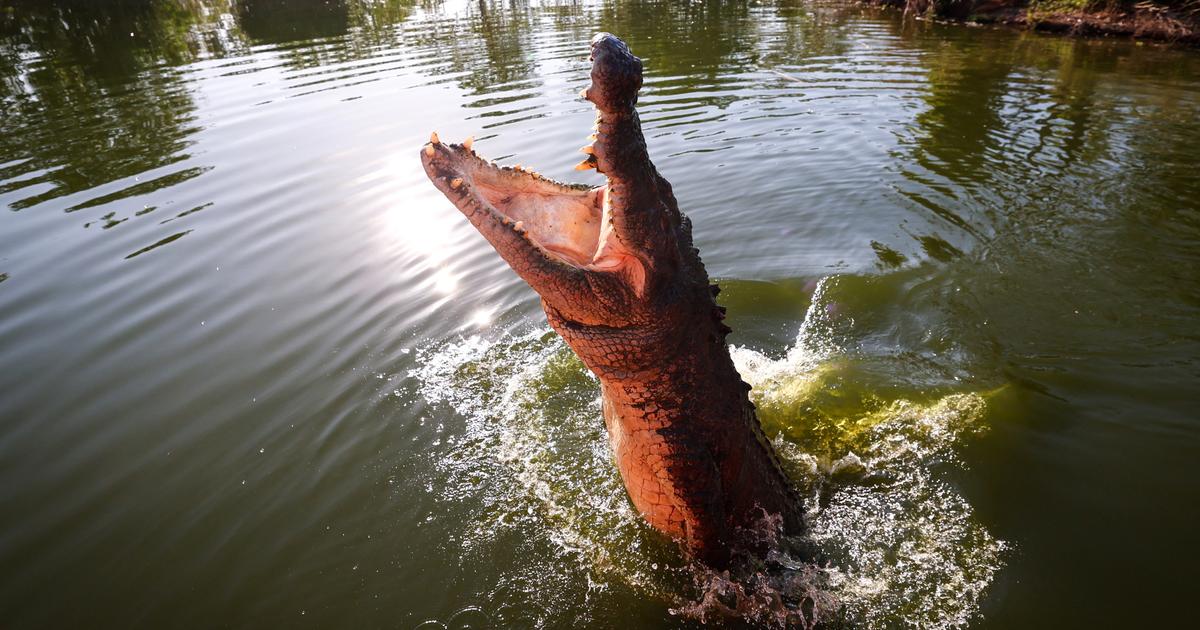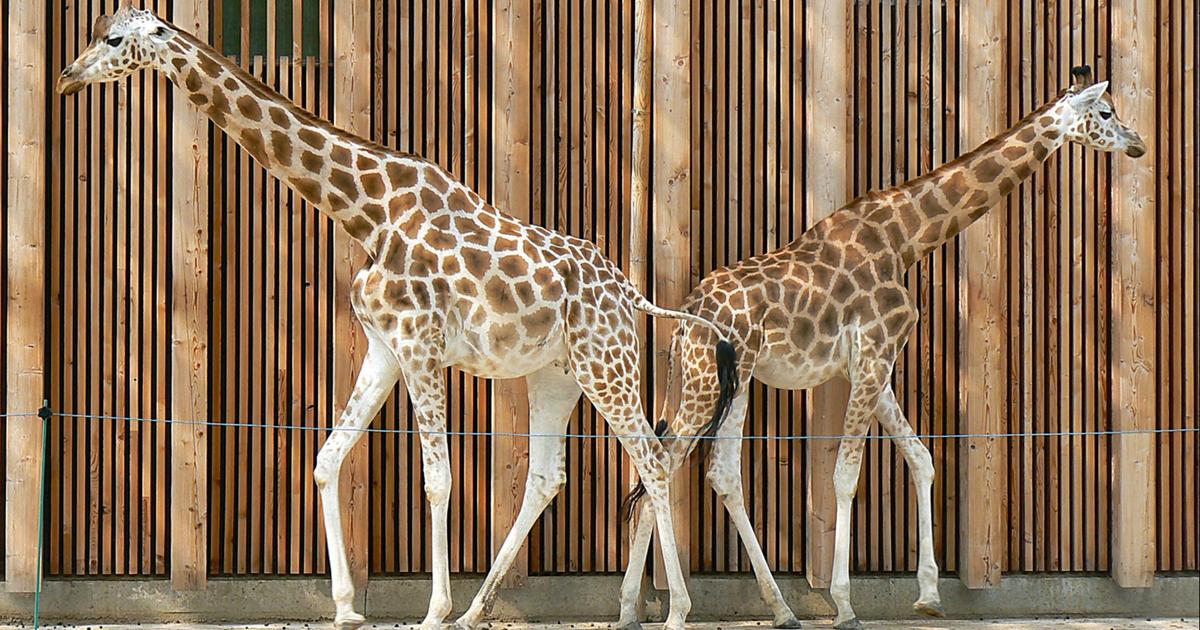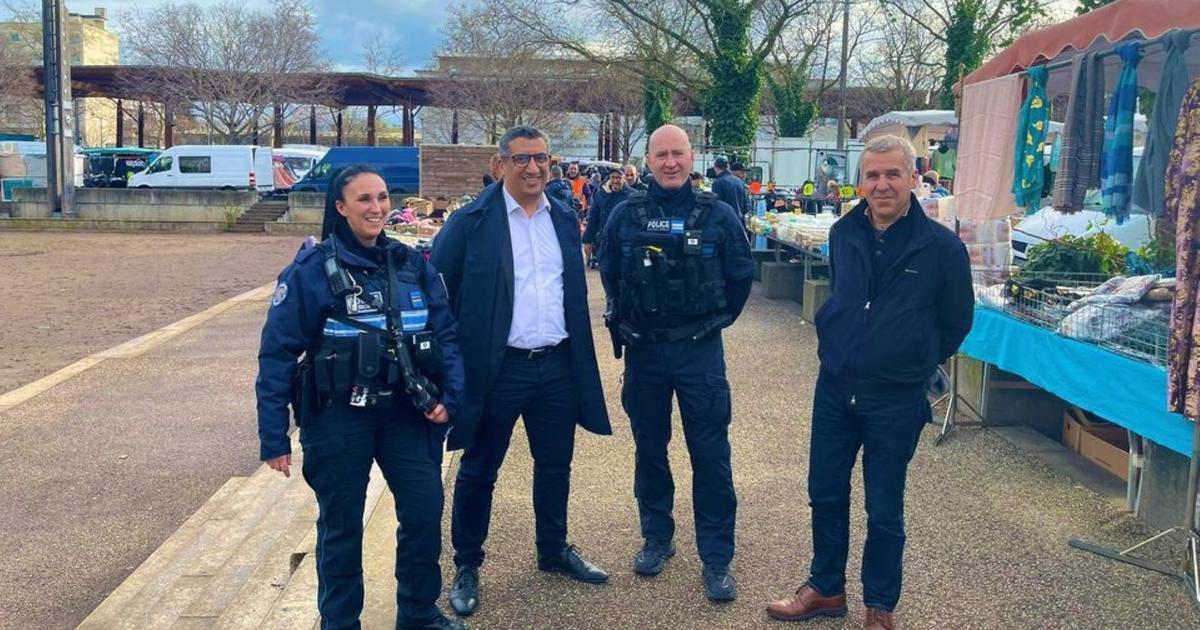Elements of the SOS Codrilo group from Tampico capture a crocodile in May of this year.
H.H.
Conrado, a 73-year-old poacher, still remembers the sound that made his net almost fall off with shock. "That's right
,
in that corner he ate it," he says while pointing with his index finger under a bridge five meters from him. The man, dressed in a turquoise T-shirt and pants rolled up to the knees, refers to an animal with whom he has lived in his illegal activity: a swamp crocodile. A few days ago, you heard how the reptile devoured a child's dog. The boy, who was not more than 10 years old, tried to run to save his pet but his father stopped him. Conrado and his colleagues have seen worse.
The septuagenarian, like many other residents of the metropolitan area of Tampico (Tamaulipas, 780,000 inhabitants with Ciudad Madero and Altamira), found out what happened several meters from where he is. On the shore of the Carpintero lagoon, a 150-hectare body of water - more than 200 soccer fields - a destitute woman was attacked by a 3-meter crocodile while washing her clothes. When rescue teams arrived, she was already dead. People crowded to record with cell phones. The videos went viral. It was the second attack death since October.
The event happened right in an area where there is no security fence. Another poacher, who prefers not to give his name and who carries a couple of buckets full of mollusks, knew her because many times they crossed paths when he returned from work: “He sold things on the street. He is not the only person who came to this part ”, he claims.
Between 80 and 90 saurians live in the lagoon, according to the latest official study by the Tampico City Council, carried out this year. However, they are not the only ones in the area. If you look at the three cities on the map, so close together that in many streets it is difficult to distinguish between one and the other, you can see something obvious: there is water everywhere. Crocodiles inhabit the entire lagoon system of the region, which reaches 42,000 hectares. Not counting the kilometers of beach. The phenomenon even caught the attention of Australian Steve Irwin, the famous crocodile hunter, who died in 2006, who broadcast a program from the city in 2004.
According to historical records, these animals have inhabited the area since the beginning of the 19th century.
The expansion of the region - fueled by the Ciudad Madero oil boom - ended up slowly eating away the crocodile habitat.
The Carpintero lagoon, in the heart of Tampico, has become 50% smaller and the mangroves that adorn the ecosystem have been greatly reduced.
Susana Castañeda, a 23-year-old neighbor, asks a question while strolling through the channel that flows into the lagoon with the Pánuco River: “If you think about it, we are the ones who invaded your house.
The normal thing is that they defend it.
It's their nature".
Sightings, a recent problem
The interactions between crocodiles and neighbors are a thing of every day. You can hardly find an inhabitant who has not seen or who knows someone who has had a close encounter. There is no rainy summer without the photographs of the animals roaming freely in the streets circulating on the nets. Graciela Sánchez, 51, lives right in front of the lagoon and is already tired of seeing them walking on the avenue in front of her home: "Imagine, I have to tie up my dogs very well," she says. But he adds: “This is recent. I've been living here for 31 years and this hasn't happened before ”.
Sánchez is right. The problems of coexistence with reptiles are recent, according to local historian David Granados. Until the 1970s, the population was relatively small. It was in that decade when a federal regulation came into force that prohibited the hunting of swamp crocodiles, a species that lives throughout the entire Gulf of Mexico and reaches Central America.
The legal change caused the number of creatures to explode.
Jaime Salinas, a biologist at the Universidad del Noreste, harshly criticizes the regulations: “There is a lot of
animalover
[animalista] who don't understand anything.
There must be a controlled hunting.
Before you saw one and killed him.
Nothing was happening.
The main thing is human life ”.
But not everything is attributable to regulation, which according to sources from the Ministry of the Environment (SEMARNAT) is not contemplated to change.
The Carpintero lagoon went from being the sewer of the region to a tourist attraction in the last decades after its sanitation.
Visitors observe a crocodile at a viewpoint in Tampico.Juan Carlos Espinosa
Today, the crocodiles of Tampico, affectionately nicknamed
Juanchos
by neighbors after an American cartoon from the 1960s, are part of the city's tourist campaigns. In the channel where Conrado fishes illegally, some boats leave every certain hour that take a walk through the lagoon and stop when the captain sees that there is one nearby, so that visitors can take the opportunity to take a photo.
Right in front of the fire station there is a viewpoint where a child throws a piece of lettuce at the animal through the fence of about 1.10 meters.
Ricardo Haro, from the Association of Environmental Lawyers of Tamaulipas, criticizes that the saurians are promoted in this way: "This normalization is dangerous," he added by phone.
Salinas is more cautious in his judgment.
“Perhaps it is not the most optimal approach.
But if tourism makes you money, and with that you finance awareness campaigns and a second security fence, that's fine ”, he says.
All the experts consulted agree on one thing: feeding crocodiles is a huge mistake because it causes predators to associate people with food.
Physical barriers and awareness
In the City Council they argue that all the attacks have happened because the person attacked went to the habitat of the animal. But in the case of the recently killed woman, there was no physical barrier preventing her from washing in the lagoon. On the other hand, the authorities insist that the signs are in practically the entire area. Graciela Sánchez does not buy that argument: “It could be avoided. There should be double protection. Do you think that a one meter fence is enough? No, son..."
The municipal government insists on individual responsibility, but ensures that awareness campaigns will increase. "There are people who do not pay attention," laments Elvia Holguera, the city's Secretary of Tourism. According to official figures, since 2008 in Tamaulipas there have been 39 contacts between swamp crocodiles and people, nine of them have been fatal. The metropolitan area of Tampico is the most dangerous.
For many years, César Cedillo, a veterinarian specializing in saurians, felt ignored. Now he heads the SOS Cocodrilo group, a team promoted by the Tampico City Council to coordinate different authorities with Firefighters and Civil Protection. He is one of the people who knows the most about the subject in the city. It wasn't until 2019 that they listened to him and left him the responsibility of spearheading the most ambitious project in years. Even so, he is aware that there are pending things: "There is a lot of pedagogy missing, and that it is something constant," he declares while passing some Power Point slides about his work at the local Tourism Office.
Cedillo admits that the best thing would be for the three cities - Tampico is governed by the conservative PAN and Ciudad Madero and Altamira by the ruling party Morena - coordinate with the same project, although there is still no formal proposal to do so.
Another fringe that has remained in recent years is that of the participation of the federal government.
In 2014, SEMARNAT installed a unit to conserve crocodiles that went outside, instead of capturing them and returning them hot, as is currently the case.
The building had a cost of 2,000,000 pesos (99,000 dollars).
It never went into operation.
In one of the boats that cross the lagoon, a family from Monterrey looks out towards the mangroves.
“There's one there!” A boy yells with force.
The boat stops for an instant.
A pair of eyes leap out from the water.
Over the loudspeaker, the tourist guide celebrates the sighting: "This specimen is behaving well."
It is the sixth of the day and it is barely 2:00 p.m.
It is a normal day in a city that still learns to live with these dinosaurs of the present.
Subscribe here
to the
newsletter
of EL PAÍS México and receive all the informative keys of the current situation of this country















